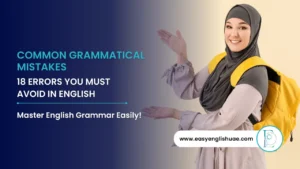

Mastering English grammar starts with understanding the fundamentals, and the present simple tense is one of the most important building blocks. This tense helps you express daily routines, habits, and general facts.
Whether you’re describing your morning routine or stating universal truths, the present simple tense is essential for clear communication. It’s the most frequently used tense in English conversation.
This comprehensive guide will teach you everything about the present simple tense. You’ll learn the rules, structure, and practical applications that will improve your English skills immediately.
The present simple tense describes actions that happen regularly or repeatedly. We use it for daily routines and everyday activities that occur on a consistent basis.
This tense is perfect for talking about habits and repeated actions. It shows what people do every day, every week, or on a regular schedule.
What is simple present tense used for:
People also call the present simple tense the present indefinite tense. Both terms refer to the same grammatical structure.
English verbs have three main forms. For example:
In present simple tense, we use the first form (base form) of the verb.
Simple present tense examples:
This is one of the most important simple present tense rules. When the subject is he, she, it, or a singular noun, add “-s” or “-es” to the main verb.
Examples of the rule:
Add “-es” when the verb ends in certain letters:
This rule makes sentences present simple tense grammatically correct and natural sounding.
Creating questions follows specific present simple rules. We use “do” and “does” as helping verbs.
Use “do” with:
Use “does” with:
Statement: You like juice
Question: Do you like juice?
Statement: She drives a car
Question: Does she drive a car?
Statement: They play tennis
Question: Do they play tennis?
Notice how the main verb returns to its base form when using “does.” This is a crucial rule for correct question formation.
Negative sentences use “do not” (don’t) and “does not” (doesn’t) as helping verbs.
Use “do not” with:
Use “does not” with:
You can use contractions (don’t, doesn’t) in casual conversation. Both forms are correct and widely used.
Understanding the difference between these tenses is crucial:
Present Simple Tense:
Present Continuous Tense:
This comparison helps you choose the correct tense for different situations.
The present simple passive form is used when the focus is on the action, not who performs it.
Active voice: They make cars in Japan
Passive voice: Cars are made in Japan
Active voice: She cleans the office
Passive voice: The office is cleaned by her
The passive form uses “am/is/are + past participle” structure.
These words often appear with present simple tense:
These expressions help identify when to use the present simple tense.
Regular practice makes the present simple tense automatic and natural.
Don’t add -s to verbs with I, you, we, they. Only use -s with he, she, it.
Don’t forget to use do/does in questions and negatives.
Don’t use present simple for actions happening right now. Use present continuous instead.
Remember that some verbs are irregular and don’t follow standard rules.
The present simple tense is fundamental for describing habits, routines, and general facts. By mastering its rules and structure, you’ll communicate more effectively in English.
Remember the key points: use the base form of verbs, add -s/-es for third person singular, and use do/does for questions and negatives. Practice these rules regularly to build confidence.
Start incorporating the present simple tense into your daily English practice. The more you use it, the more natural it will become in your speech and writing.



©2023. Easy English and Computer Institute. All Rights Reserved.
WhatsApp us